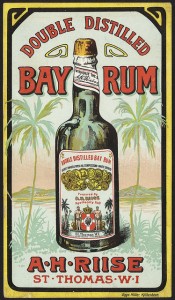A Guide to Spirits (Alcohol not Ghosts)
I’ve said it before and I’ll say it again: I’m a cocktails girl. Always have been. I’ve just never acquired a taste for any beers or wines. Those yeasty, fermented brews do not entice my palate or mix well with my body chemistry. I prefer to leave yeasty flavors to breads and fermented flavors to yogurt, thank you very much.
When it comes to alcohol, I highly favor sweet, fruity concoctions. And, truth be told, I like drinks with a lot more kick to them than a bottle of beer.
So I thank the world for spirits: for rums, vodka, gin, tequila, whiskey and brandy. They are the basis of all those delectable, vibrant fruity cocktails I love so much. Lacking any fermented flavor and packing quite a punch, spirits create the best drinks for me.
Coming to think of it, I’ve always preferred strong substances: strong espresso coffee, dark chocolate 70% cocoa, designer perfumes, vibrant colors and people with strong characters. So it’s just fitting that I also prefer strong, slap-you-upside-the-head cocktails.
But I’ve often wondered, what exactly is the difference between beers, wines and spirits anyhow? I recently took it upon myself to do a bit of research and educate myself on my favorite intoxicants. Here’s what I learned:
All alcohol starts out the same – by fermenting various grains, fruits or sugarcane products. Beers, wines and ciders are the end product of such fermentation processes. Since the yeast that causes fermentation dies after the liquid reaches 4-6% alcohol levels, fermentation ends.
But spirits take the production process one step further by distilling the fermented grains or fruits. Distillation removes impurities, nixes that nasty fermented flavor and super-concentrates the alcohol levels. Instead of the measly 4-6% alcohol content of most beers and wines, distilled spirits whack that up to 40% alcohol or more, depending on the liquor and processing.
By regulations, spirits must have a minimum 20% alcohol content and have no added sugar. (Distilled alcohols with sugars added are technically called liqueurs, including such tasties as Amaretto and Kahlua.)
After distillation, spirits are aged in barrels which gives them distinctive flavors and colors. Each type of spirit has its own aging time and processes. Some spirits are also filtered to remove impurities and/or discoloration.
Different liquors originated in different parts of the world. They’re also each made of particular grains, fruits or sugarcane products. Some are strictly regulated for quality and production while other spirits are more loosely regulated, giving them more variety from company to company and region to region.
Despite the differences, spirits all go through the processes of fermentation, distillation and aging.
Here’s a brief look at the production of each major spirit:
Rum
– originated in the Caribbean and Latin America
– made from molasses or sugar cane juice
– many varieties, including dark, golden, light, flavored and spiced
– light rum (also called silver or white rum) is filtered and highly-controlled for quality and consistency
– not highly regulated world-wide, so there are many variations on proof, aging and naming
– typically 40-50% alcohol content, but as high as 75-80% in over-proofed rum
well-known rum cocktails: Daiquiri, Pina Colada, Mojito, Mai Tai
Vodka
– originated in Russia and Eastern Europe, later produced in Scandinavia also
– made of various grains or potatoes
– highly distilled
– typically 40% alcohol but may be from 30% and up
well-known vodka cocktails: Cosmopolitan, Black Russian, Vodka & Cranberry
Gin
– originated in the UK
– unique spirit because it’s made from juniper berries
– typically 40% alcohol
well-known gin cocktails: Martini, Singapore Sling, Gin & Tonic
Tequila
– originated and still only made in Mexico
– made from the blue agave plant, which only grows in a few states in Mexico
– highly regulated for quality
– usually 38-40%, but varies from 30-55%
well-known tequila cocktails: Margaritas
 Brandy
Brandy
– originated in Europe
– unique as a spirit because it is actually distilled wine
– 35-60% alcohol
– usually drunk straight or on the rocks as an after-dinner drink / dessert
Whiskey
– originated in Scotland and Ireland, later produced in USA as well
– made from various grains
– typically 40% alcohol
– a very strictly-regulated liquor worldwide and with many varieties
well-known whiskey cocktails: Manhattan, Whiskey Sour, whiskey & coke
(* for more information about this post, please see this page *)
————————————————————————————————
You might also enjoy:
Budget Travelers Guide to Drinking Cocktails on the Road
Best Rooftop Cocktail Bars Around SE Asia
—————————————————————————————————————————————–




















 Hi! I'm Lash, an American nomadic world traveler who's been traveling solo since 1998. I’m passionate about traveling the world nomadically and then sharing it all with you. I hope to inspire you to travel the world, to entertain you with tales from the road, and to help you reach your travel dreams. Welcome!
Hi! I'm Lash, an American nomadic world traveler who's been traveling solo since 1998. I’m passionate about traveling the world nomadically and then sharing it all with you. I hope to inspire you to travel the world, to entertain you with tales from the road, and to help you reach your travel dreams. Welcome! 




5 pings
5 Luxury Destinations for Cocktail Lovers - LashWorldTour
2019/08/29 at 9:48 pm (UTC 8) Link to this comment
[…] a life-time victory or merely to take a break from a tough work week or season, to cocktail lovers, the perfect mix of spirits can quench a certain type of thirst that no other drink can. With that said, here are 5 getaways to […]